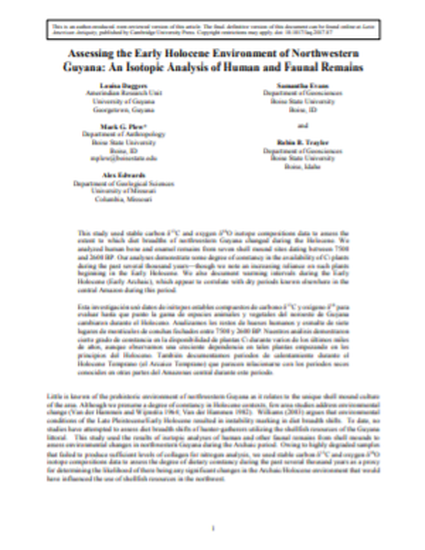
This study used stable carbon δ13C and oxygen δ18O isotope compositions data to assess the extent to which diet breadths of northwestern Guyana changed during the Holocene. We analyzed human bone and enamel remains from seven shell mound sites dating between 7500 and 2600 BP. Our analyses demonstrate some degree of constancy in the availability of C3 plants during the past several thousand years—though we note an increasing reliance on such plants beginning in the Early Holocene. We also document warming intervals during the Early Holocene (Early Archaic), which appear to correlate with dry periods known elsewhere in the central Amazon during this period.
This is an author-produced, peer-reviewed version of this article. The final, definitive version of this document can be found online at Latin American Antiquity, published by Cambridge University Press. Copyright restrictions may apply. doi: 10.1017/laq.2017.87
Available at: http://works.bepress.com/mark_plew/67/
